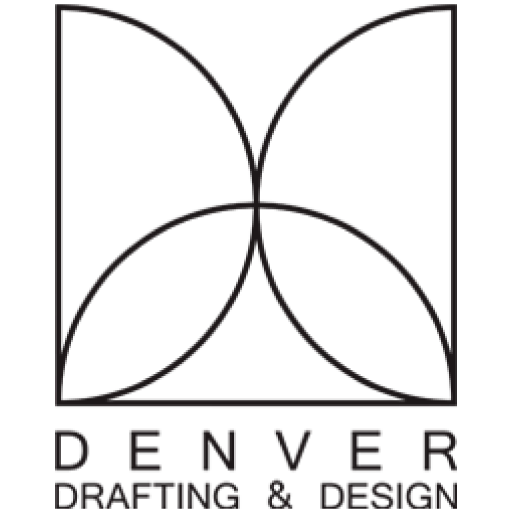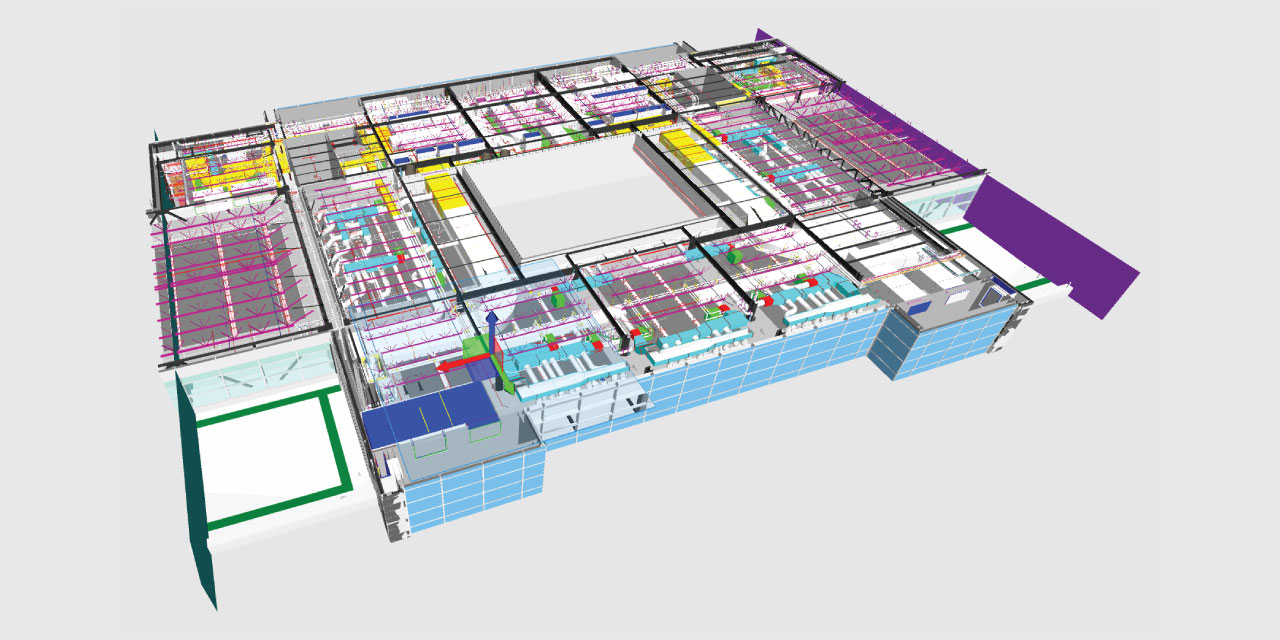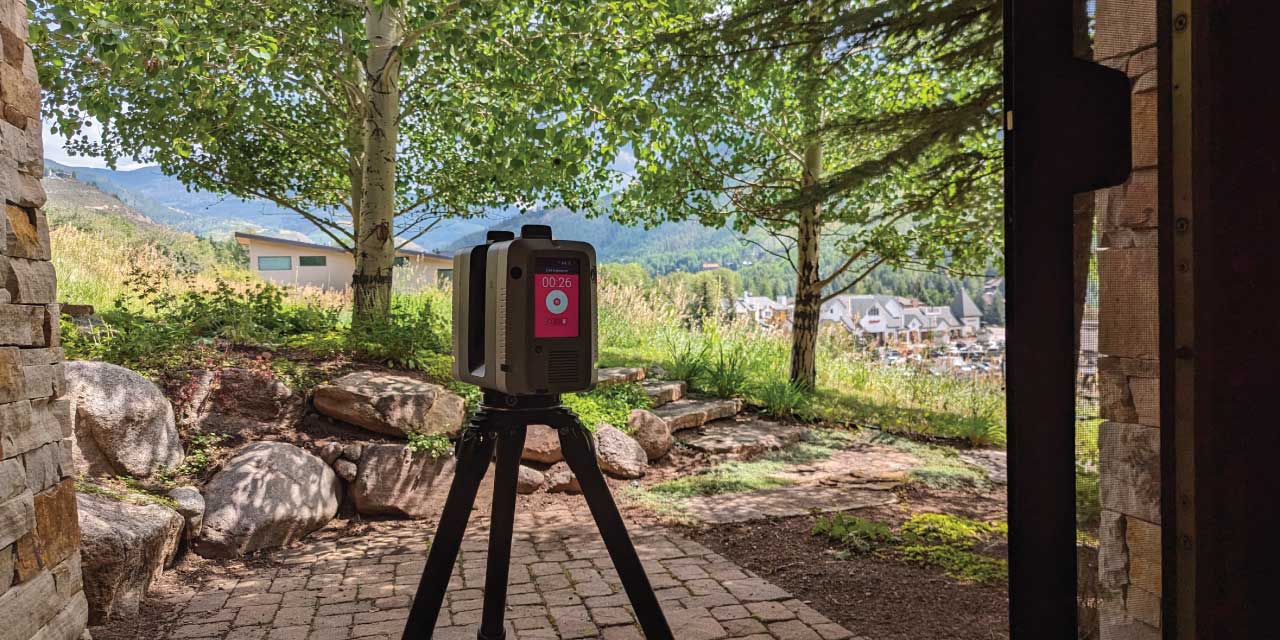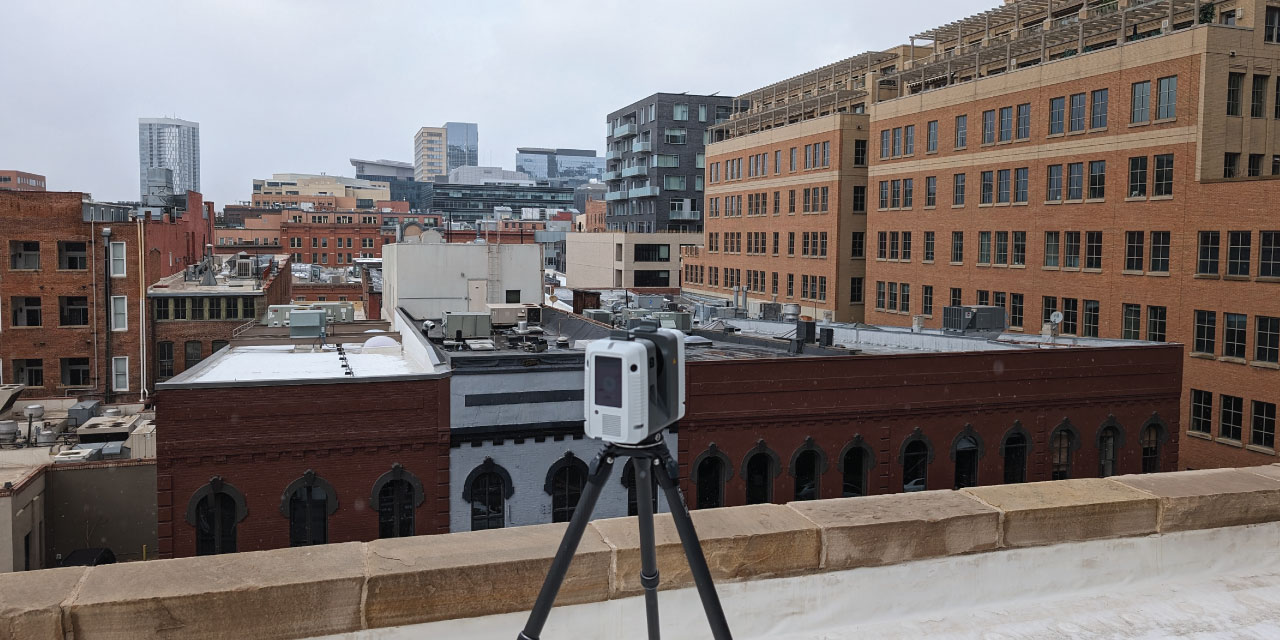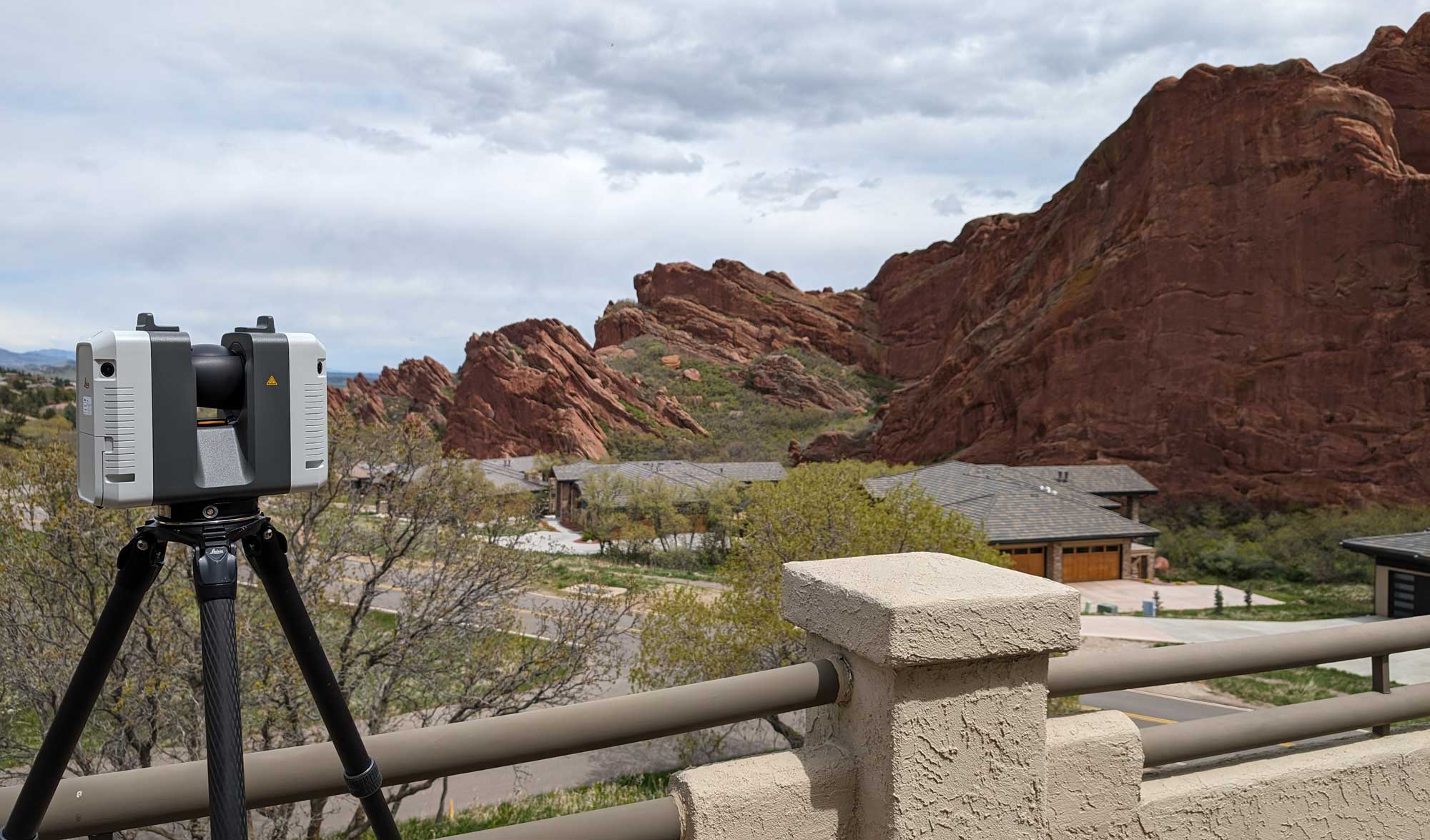
The Benefits of Laser Scanning: Precision, Versatility, and Efficiency
Accuracy
Traditional methods of measurement, such as tape measures or laser distance meters, can provide decent rough estimates, but they often fail to capture subtle irregularities in construction. In wood-framed residential buildings, for instance, walls are almost never perfectly square or plumb, which frequently leads to discrepancies between the measurements taken and the actual dimensions of the space. With laser scanning, these angular idiosyncrasies are always captured precisely, thus providing architects and builders a more accurate representation of the space as it is. This level of detail is essential, as even a minor discrepancy can lead to expensive errors during the build process.
Note: Our final drawings are typically always drawn orthogonally, which is what is normally desired by the end-user. If a wall is slightly out of square, we will “split the difference”, meaning if it’s 4” out from end-to-end, we will show it as being 2” out at either end of the wall. However, for certain applications, such as shop drawings, where extremely high precision is warranted, we can display the existing conditions as accurately as desired.
Applicability
Once a comprehensive point cloud has been rendered from a laser-scan, the data can be used in a wide variety of contexts, including those that were not even in the original scope of the project. A client may initially request a basic floor plan, but as the project evolves, they might find that they also need detailed ceiling plans or measurements of specific architectural features, such as baseboards or fireplaces. Whereas more traditional methods of measurement will have only captured what was originally requested, this additional information is already embedded in the captured point cloud, which eliminates the need for any additional site visits or measurements. At Denver Drafting & Design, all the client needs to do is reach back out to us, and we’ll readily supply the measurements they need. Architects and builders consistently have to adapt to evolving project demands – laser scanning offers the flexibility they need to confidently adjust on the fly.
Efficiency
Traditional methods of measurement are inevitably time-consuming and will often require an array of tools and techniques. Measuring a large building with conventional methods will require an ensemble of tools such as tape measures, laser distance meters, and even scaffolding for less accessible areas. Laser scanning, though, can complete the same task in a fraction of the time, using nothing but a scanner and a tripod. At Denver Drafting & Design, we can complete a full scan of a 200-room motel in far less than a day – a process that would have taken days with manual measurements.
Minimal Disruption
In addition to making life easier for the person measuring, laser scanning’s efficiency can also bring peace of mind to the owner or operator of the building being measured. Historic preservation projects, for instance, minimize the possibility of any potential accidents by using a method of measurement that does not require anyone to touch any fragile or historic surfaces. And in scenarios where businesses would prefer to continue operations while measurements are being taken, the minimal time required for measurements is invaluable. Thanks to the non-invasive nature of laser-scanning, businesses are able to maintain regular business hours as we take our measurements. In most cases, people can even be present in the room while scans are taken – the presence of bodies in the point cloud typically won’t impact the integrity of the requested measurements or models.
Cost
The advanced technology of laser scanning does present its own fixed costs, but the reduced time and resources needed to conduct a laser-scanned survey will often result in lower overall project costs. Instead of having to shoulder additional costs for labor, equipment rental, and lodging to support a multi-day measuring process, clients are paying for a process that demands minimal equipment and time.
At Denver Drafting & Design, we have performed complete laser-scanning services to serve a diversity of clients and projects, from a 100,000 sf Hotel in Snowmass to an historic home in Boulder, CO and everything in-between . Reach out at our “Contact Us” page to learn more about how laser scanning can be an asset for your architectural project.
NOTES
Accuracy: Accuracy. That’s a big one. One of the drawbacks of measuring by hand, especially in wood framed residential construction, is that nothing is square. Nothing’s ever square, nothing’s plumb. So you can take two measurements in a room, you know, I can say, from this wall to this wall is 10 feet, and go six feet that way, it’s going to be 10 feet, three inches, right? Because the walls are out of square. You know, that could be out of plum. It could the measurements could vary from the bottom of the wall to the top of the wall. So it really you’re doing kind of the best you can to, you know, but what inevitably ends up happening when you’re measuring something by hand is that you take all your measurements, you get back to the office, and nothing lines up, which is expected because, you know, it’s real world construction, like nothing square, nothing is you’re dealing with a lot. A big problem is that wall thicknesses. Do you know how thick the wall is? You know, a lot of times, if there’s not, like a door, when you’re in the wall, so you’re you’re guessing, you’re taking your best guess, and you go back to the office and doesn’t line up, because that wall was only six inches, where he thought it was eight inches, or something like that. So
the dimension of the wall because it’s connected to the other one, yeah, that’s cool, exactly.
So when you stitch all these scans together, you can see, exactly, oh, this room is not square, but you can deal with that, you know, you can say, Okay, this room is, you know, six inches out of square from one side of the next. We’re going to split the difference. And, you know, make it three inches out, you know, because people don’t want to see in reality like this, you know, one of those walls is probably going to be maybe half a degree, you know, at a at a square. But when, when I give this to an architect, they don’t want to model that has walls that are have a tiny bit slanted, because those, they’re going to be like, What is this crap you just sent
me? Like, but if they’re doing the kitchen renovation, they need to know that so that they can,
yeah, it’s exactly, and that just goes, you know, into what, what the final political is going to be. You know, if you’re going to be doing shop drawings, and you do need everything to be perfectly accurate to the eighth of an inch, then I can give that to you, because
Applicability: I have all that data, yeah, but something like this, where I’m just doing the overall floor plans, they just want to know, you know, they want to know the big picture items, you know, from from one end of the room to the other end of the room has to be within, you know, half an inch or whatever, right? And
so even if that’s not what they asked for in the beginning, if they get further into the project and something needs to be really detailed. You already have that information, and they could say, Hey, can you give us, you know, the super detailed on this garage or the fireplace or whatever,
exactly? And that’s actually another great benefit of laser scanning. Talking about benefits of laser scanning is that after I scan, sorry, my dog keeps his little bell. He rings and he wants to go outside to go potty, he’s ringing it. He’ll be right back.
Anyways, I was saying so the one of the great things about laser scanning is that you do have so much data that, like, if the client comes back down the road and they’re like, Oh, we do need ceiling plans. Actually, like I did, that wasn’t originally in the proposal, but they’re like, Oh, can we the ceiling plans? I already have all that data because I’ve taken, you know, scanners, has already scanned that. So I’m just, you know, it’s easy data, whereas. In the past, you’d have to go back out on site. Yeah, exactly. So there’s a huge added expense, yeah. So, yeah, that’s definitely another benefit.
Efficiency: it’s fast, you know, I can, I can scan. I did a motel, like a 200 room motel the other day in like three hours. Wow, yeah, which is insane. Like, back in the day, I would have taken me four days to measure that, at least two or three days to measure that, incredible, yeah? Like, I just did it like a really nice, like, 6000 square foot home in like, two hours, three hours, whereas it would have taken me three days, and it would not have been nearly as accurate if I did it by hand. Yeah,
Minimal Disruption: So speed, obviously, is a big one, non destructive, you know, it you can, you can measure everything without touching it. So especially with, like, historic preservation, that’s important, you know, I’ve been there to fill in with stuff, especially like projects with, you know, where you have to measure stuff that’s difficult to access, like the Mother Wolf one on the Projects page, where to measure the ceiling. You know, it’s the kind of thing where, if I would have had to measure that by hand, we would have had to take, you know, we’ve had to get a some kind of, like scissor lift or something, or scaffolding. Would have taken pays to up there with the, you know, tape measure, and it would not have been nearly as accurate.
Cost: in a lot of cases, it’s actually cheaper, you know, especially something like that, where I would have had to be on, especially if I have to, like, travel like, you know, spending four days on site somewhere, getting a hotel room and all the travel expenses and stuff, if that’s only one day, that’s definitely going to be cheaper, obviously.
Denver Drafting & Design’s laser scanning services offer unparalleled accuracy and efficiency for a variety of architectural needs. Whether for new builds, building analyses, or repurposing spaces, laser scanning ensures precise measurements and detailed models. Clients can choose between standard and color scans based on their specific project requirements. The process is fast and non-intrusive, providing high-quality results without the need for extensive manual labor or expensive equipment.
For ongoing projects and long-term collaborations, Denver Drafting & Design also offers the possibility of hourly rates, ensuring flexibility and continuous support. By utilizing advanced technology and maintaining clear communication, Denver Drafting & Design stands as a reliable partner for all your architectural measurement needs.
